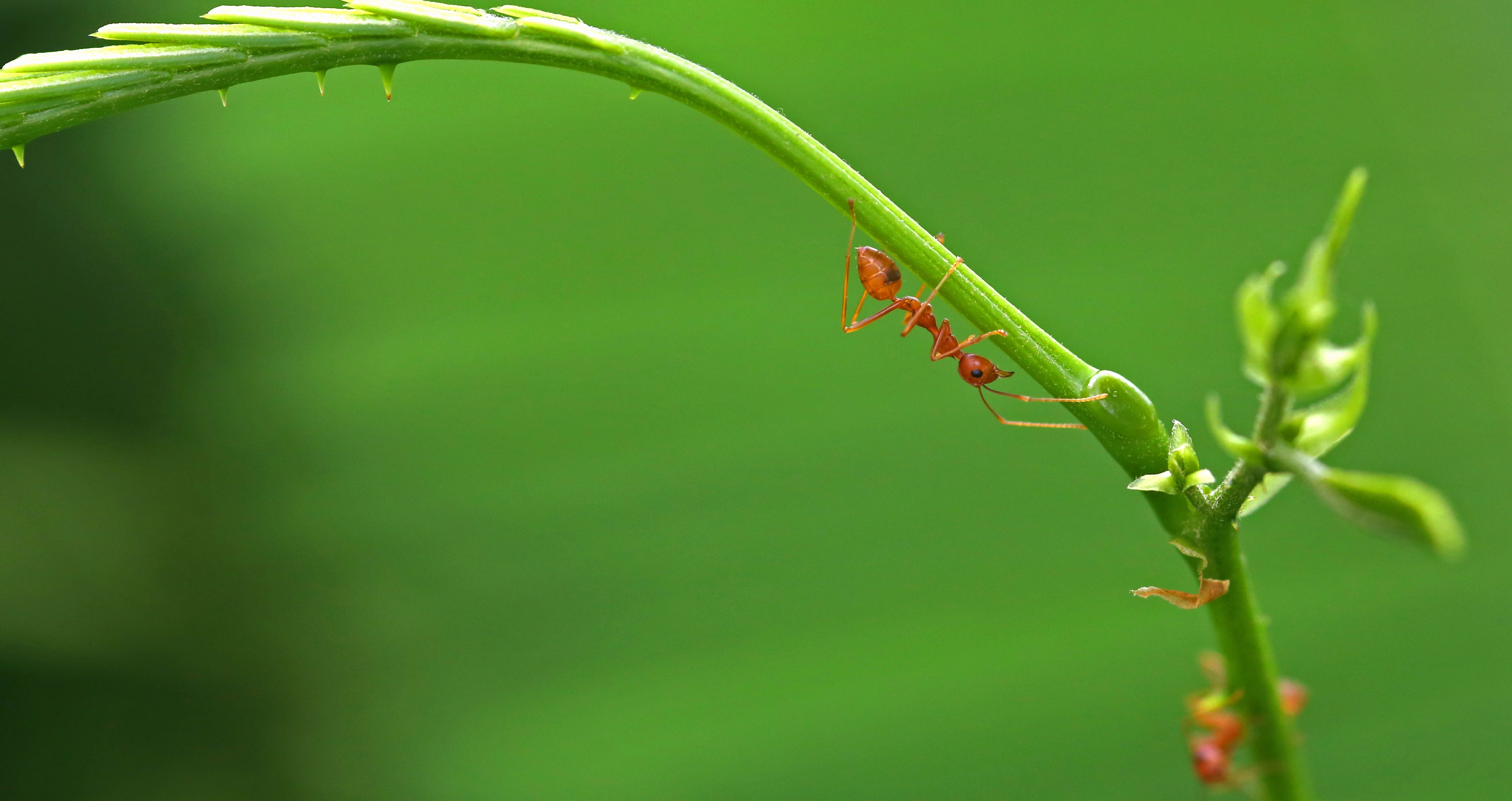
Out in the natural world it’s survival of the fittest. Whether that means being the fastest or strongest, the best camouflaged or most poisonous, or perhaps simply the most intelligent—nature has thought of it all. Amongst the most ingenious strategies are symbioses. These are species that have adapted, through chance, to rely on and benefit from each other. How these strange relationships evolved in many cases is still a mystery, but as you’ll see, the very existence of humankind might just depend on them.
8. Honey guides and honey badgers

We all love honey, but the prospect of thousands of angry bees is enough to put off most opportunist predators. For this reason, the honey guide (Indicator indicator), a small nondescript brown bird from Southern Africa, has developed a remarkable relationship with a much more powerful friend. The honey badger is a formidable beast, legendary for being immune to snake venom and reputedly not afraid to pick fights with lions. This partnership works by the honey guide hunting out a beehive and hopping from branch to branch to guide the honey badger to their joint treasure. The honey badger breaks in, and the bird feasts on the leftovers. Interestingly, in the absence of badgers, honey guides have been known to guide humans to beehives too. It’s said by the Zulu that if you ignore them, or don’t share the honey then bad luck will befall you.
7. Antelope and Oxpeckers

An Oxpecker (Buphagus erythrorhynchus) perched on the back of an antelope is a quintessential scene on the African savannah. Up until very recently this was thought to be a classic case of mutualism. The oxpecker picks bugs and parasites out of wounds, keeping them clean and helping the antelope in the process. The bird gets a meal for its efforts, and the antelope has a cleaner wound. This was thought to be the case from decades of observations, until biologists recently showed that the oxpeckers—rather sneakily—actually help keep the wound open. All that pecking removes the bugs, but also stops it from healing, probably to keep the supply of bugs coming for the future. What looked like a mutualist relationship, actually turns out to be a little one sided.
6. Coral and zooxanthellae

You might think of coral as a single organism, but actually it’s two. The coral polyp, and its symbiote the zooxanthellae. They live together almost in unison, with the coral providing a safe protected environment and the zooxanthellae, a type of algae, photosynthesising to provide food. Unfortunately, when climate change causes the water temperature around reefs to increase, sometimes the stress causes coral to expel its symbiotic zooxanthellae. This is known as coral bleaching, and ultimately can cause both to die.
5. Cleaner wrasse and fish

Cleaner wrasses are a group of small blue and silver fish that live on coral reefs, often working together and forming ‘cleaning stations’. They have evolved to eat parasites and dead tissue from the skin of larger fish. It’s a mutualistic relationship that provides food and protection for the wrasse as well as health benefits for other fish. Interestingly the wrasse are extremely trusting, and have even been seen cleaning the inside of sharks mouths.
Interestingly there are other species that mimic cleaner wrasse, sneaking up and biting chunks of flesh out of larger fish. Mutualistic relationships are always ripe to be taken advantage of.
4. Dogs and humans

One of the most commonly overlooked mutualistic relationships is that between dogs and humans. Both species benefit, with dogs taking advantage of human intelligence, and humans benefiting from their hunting skill. Research suggests that dogs were domesticated as long as 15,000 years ago, meaning we’ve been working together for a very long time.
3. Pistol shrimps and Gobies

In this relationship the pistol shrimp is a builder, digging out and maintaining a burrow on the seabed. This acts as a home to not only the shrimp, but its gobie friend too. Gobies are small bottom dwelling fish from the genus Strongobiops. So why would a gobie get a free place to stay? Well, while the burrow is being excavated the gobie acts as the shrimps eyes and ears, looking out for potential predators. A quick flick of the tail acts as a warning and both bolt for the hole to hide!
2. Borneo’s bats and pitcher plants

We all know that bats like to find a nice cool and quiet spot to roost. It might be an abandoned tree hollow or perhaps a church roof. Not so for Borneo’s bats, who have recently been discovered getting a good nights sleep inside the cups of pitcher plants deep in the bornean rainforest. It turns out that this is a safe and particularly welcoming place for bats, with the pitcher plants even evolving special reflectors to help guide the echolocating bats in. So what’s in it for the plant? Well, fertiliser delivered nightly in the form of bat droppings.
1. Ants and acacia trees

One particular species of ant that lives throughout central America has evolved a particularly unusual relationship with a tree, known as the bullhorn acacia. In biology, they are used as the perfect example of a coevolved mutualistic system, where both species benefit from their joint relationship. The acacia employs the ants to help repel herbivorous animals, that might wish to eat its leaves. They kill crickets and even sting the heads of animals like goats. In compensation the tree produces a sweet nectar from special glands for the ants to feed on.
